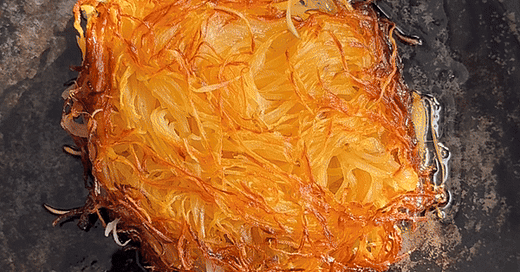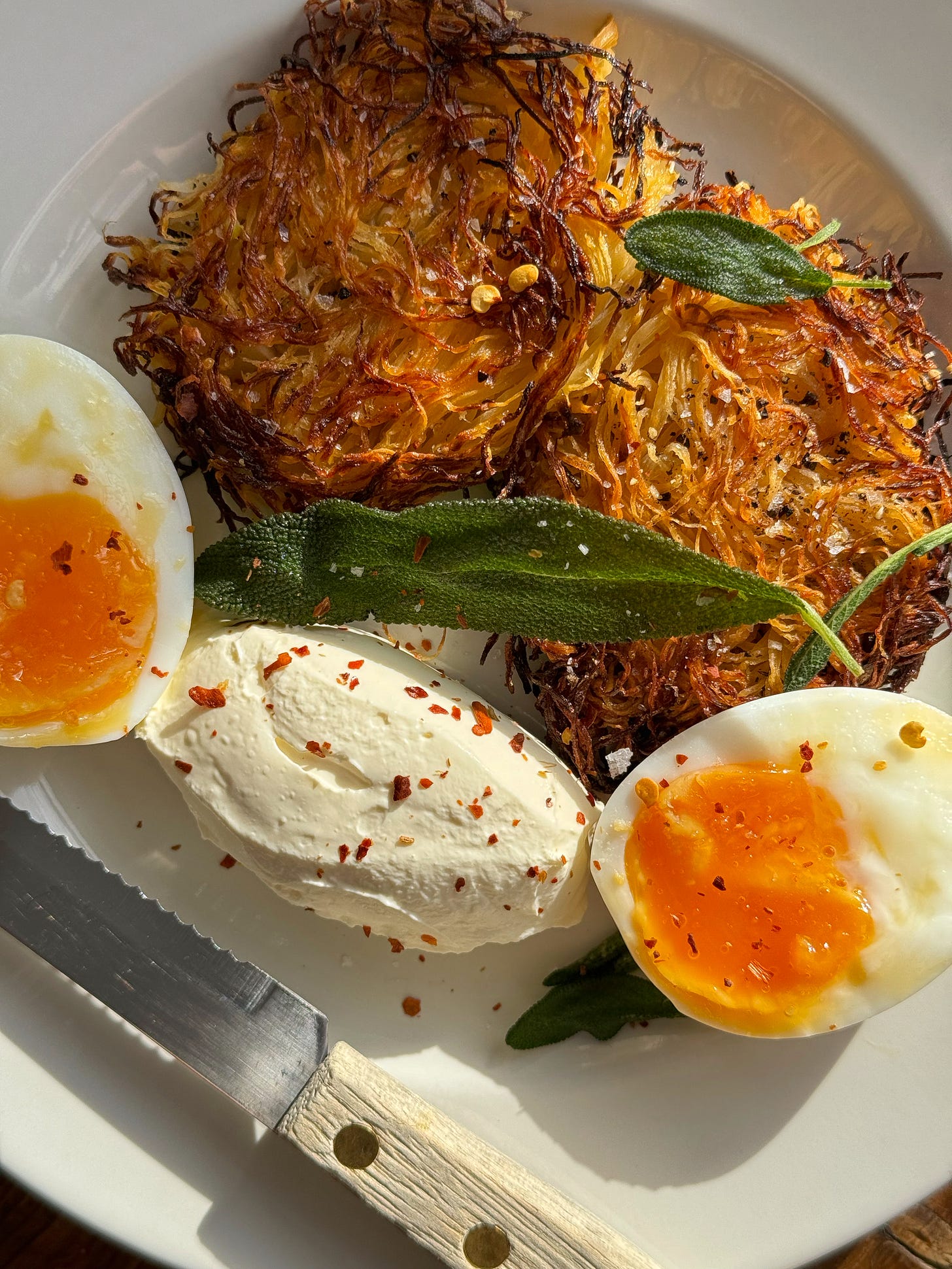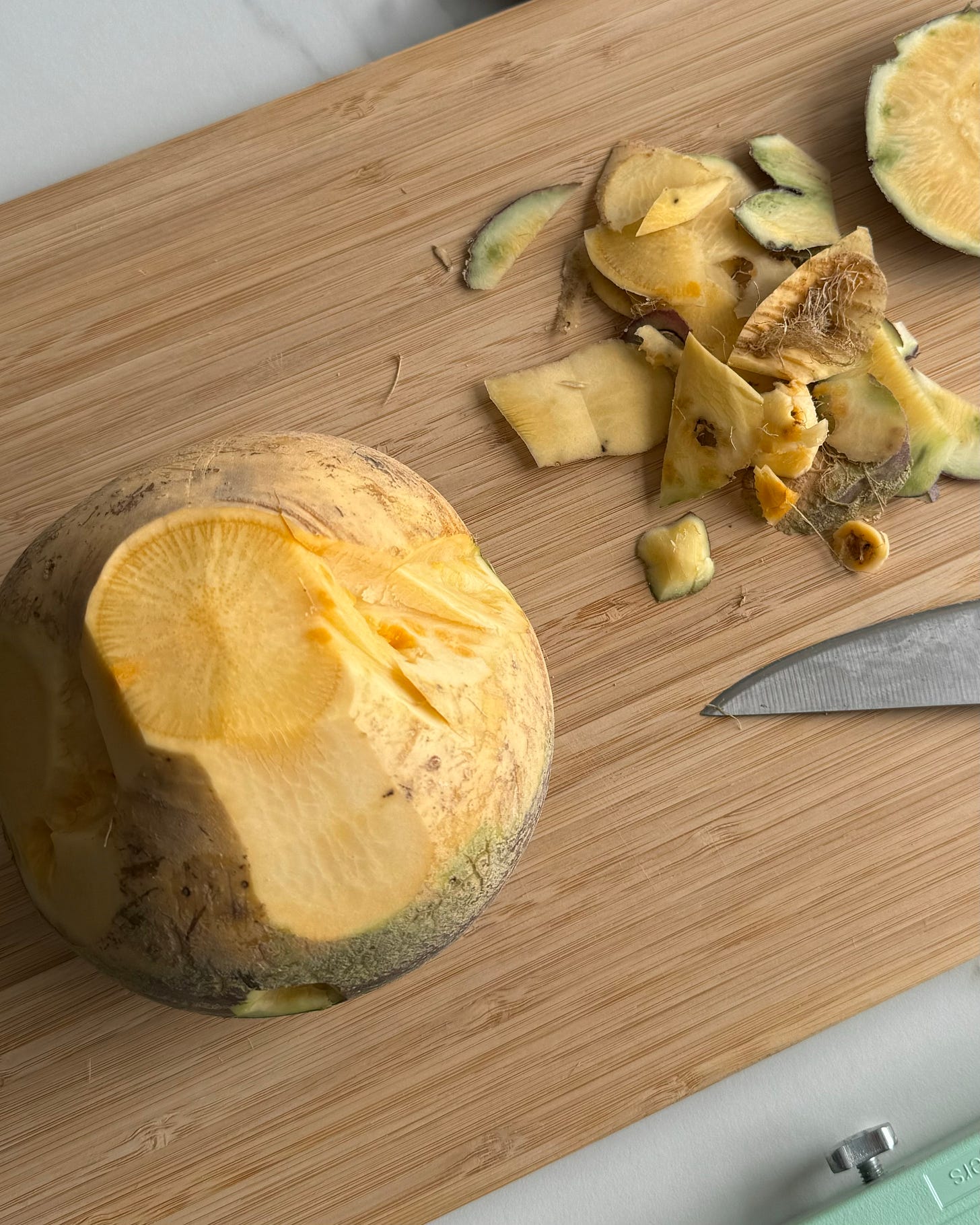👋+: Rustic Rutabaga Rösti
how to make rösti the old-fashioned way + a gustatory Q&A
Allô! 👋
Hello! Welcome to the seasonal sundays section of the good food at home newsletter. This is a weekly-ish paid supplement that aims to provide simple recipes for those seasonal ingredients that may sometimes elude or confound us in the kitchen. The main newsletter will always be free, but by subscribing to seasonal sundays you will not only be able to access extra recipes + the full archive, you will also help support all the researching, cooking, documenting & writing that goes into sharing this newsletter with you. If you’d like to be a part of a growing community and show you value this work, subscribing is easy and costs less than £2 per week (less than £1/week with an annual subscription or free if you refer some friends, and the first 7 days are always free)! Why not give it a shot? We’d love to have you 💛
At this point in the season, when spring starts to appear in tentative starts and bursts (snow melts, more snow comes, snow melts again…* repeat ad vernum), I find myself slowly turning away from soups and stews, and increasingly leaning towards lighter dishes that rely on the same stored veg that make soups and stews so delectably cosy on darker days. Enter the hardy rutabaga.
Members of the brassica (cruciferous cabbage) family, rutabagas store exceptionally well over winter and therefore make excellent candidates for late winter / early spring meals (they can otherwise usually be enjoyed freshly harvested from September to November). To me, they taste somewhere between a carrot and a potato, and were surprisingly delicious when I first tried them as my mind was expecting something more akin to a punchy turnip or nippy cabbage core. Personally, I think if we re-baptised them the potato-carrot (potarrot? carrato?) they’d become a whole lot more popular.
*it’s amazing to me that most of us with so-called “proper” winters manage to forget every year that the first taste of spring is always nothing more than a beguiling promise — luckily we have memes and even more memes to make light of this collective amnesia
As I live in Norway and the rutabaga has its roots in Scandinavia (likely Sweden, to be precise, hence the sometimes-used name “Swedish turnip” AKA swede), I find the vegetable is pleasingly popular here. Its most common use seems to be in place of potatoes in a mash, which is absolutely delicious, unless you get lured into buying it dehydrated in a packet, in which case it tastes fake and foul.
more on fake (and real) foods here:
•••
Ironically, if you don’t have any rutabaga on hand, I do think that a mixture of carrot and potato would work quite nicely as a substitution. The main thing to note is that while potatoes should not be consumed unless properly cooked, you can eat rutabaga raw — much like you would kohlrabi or sunchokes in thin shreds or slices — so you don’t have to worry too much about making sure you’ve cooked your rutabaga all the way through.
rutabaga rösti with sage & crème fraîche
Keep reading with a 7-day free trial
Subscribe to good food at home to keep reading this post and get 7 days of free access to the full post archives.








